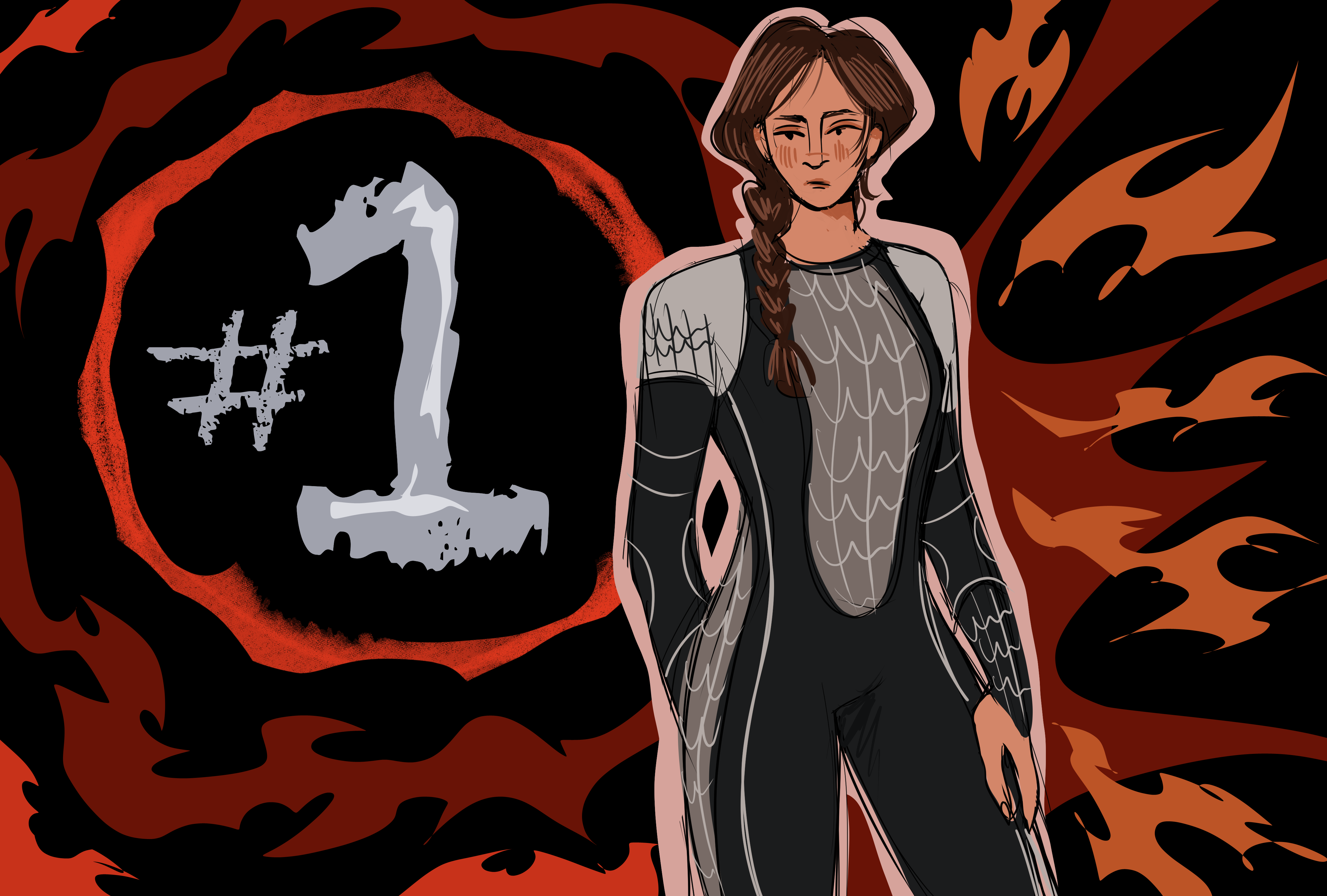
There was a brief time where all movie studios were pumping out book-to-movie adaptations in order to create the next box office smash. Now, the concept of a book being turned into a movie is not groundbreaking by any means. However, in the early 2010s, it seemed that all anyone wanted to do was create film adaptations of popular books, especially those geared towards teenagers and young adults. This was probably prompted by the immense amount of revenue that was garnered through the release of film series like “Twilight” and “Harry Potter”. Seeing these franchises’ success, the film studio Lionsgate took a chance on what seemed to be a very lucrative film endeavor. As a result, we now have a series that includes the best book to film adaptation ever made, “The Hunger Games: Catching Fire.” This movie has been able to stand the test of time and has recently experienced a resurgence since fans on social media sites Twitter and Tiktok have decided to revisit the series because it was put on Netflix earlier this year.
The release of the “Hunger Games” movies was a case of being at the right place at the right time. Let me set the scene: The year is 2011. Both “Twilight: Breaking Dawn Part 1” and “Harry Potter and the Deathly Hallows: Part 2” have been released. Two of the biggest franchises to ever hit theaters are coming to a close. Enter the genius idea of adapting yet another book series geared towards a young adult (YA) audience. The “Hunger Games” series was something that differed from the popular YA novels of the time: it was a series that centered around a strong and fiercely independent female protagonist that did not have romantic endeavors at the center of its plot (sorry, “Twilight”). The “Hunger Games” series, written by Suzanne Collins, is a YA dystopian series that focuses on Katniss Everdeen from one of the poorest districts in the nation of Panem, who over the course of three novels goes from a Hunger Games tribute to the face of a national rebellion that she never intended to lead.
The success of the first “Hunger Games” film was something that other studios desperately wanted to replicate. Unfortunately, this was not the case for the many films that tried to follow the YA adaptation trend of the 2010s. “Divergent” and “The Maze Runner” are two series that have similar concepts or elements as the film adaptations that preceded them, namely “Harry Potter” and “The Hunger Games.” Put briefly, both films are based off of dystopian novels that were never able to reach the same amount of acclaim that “The Hunger Games” did. And in the case of the “Divergent” sequel, “Insurgent,” it had a second installment that was heavily criticized for being derivative rather than innovative, a trap that is easy to fall into when you’re trying to stand out in the already saturated YA film market. Which raises the question: What is it that the “Hunger Games” series, in particular “Catching Fire,” has that these other films didn’t, allowing it to beat the so-called ‘sequel curse’ so it can be considered the best film in the entire series?
Answering this question isn’t exactly easy, but there are factors that can be considered when talking about the intrigue of “Catching Fire.” A common struggle with book to film adaptations is the exclusion of plot details or developments from the book. However, this is not the case for “Catching Fire,” which stays truthful to its source material, and transfers small plot details from the book to the movies and allows audiences to learn a bit more about the characters they are seeing on screen. I mean, come on, we finally get to know what Katniss and Peeta’s favorite colors are! (In case you were wondering: green and orange respectively). In films like “The Maze Runner” and “Divergent,” any major character development or plot details that flesh out the characters are cast to the side in favor of focusing on the main plot. This results in the protagonist’s becoming shells of their former selves, sticking to the surface level characteristics that they were defined by in the first movie, rather than being continually developed in their respective series. Even Peeta, who was regulated to a love interest in the first film, becomes a more fleshed out character with his own motivations and characteristics that are yes, sometimes tied to Katniss, but he is still seen as his own person. The same cannot be said for characters like Four from “Divergent” and Teresa from “The Maze Runner,” whose plot lines feel like they exist because they are romantically tied to a main character.
The plot of “Catching Fire” differs from the first movie, but still brings up themes that are relevant to “The Hunger Games”, showing that the screenwriters understand the concepts that are of importance to the series, and are committed to making a faithful adaptation. Having the source material on hand can be seen as an advantage for those who make a book-to-film adaptation, but it is still easy to have a film that doesn’t execute the plot and concepts that made the book in question a best seller, and the movie ends up being a complete and utter flop. For instance, the “Divergent” series raises interesting criticisms on the validity of classifying people based on values (honestly, bravery, kindness etc.) and what it means if a person is unable to be defined by one set value. However, the “Divergent” movies seem to forget this major theme of the books and focuses more on the drama and action, rather than the intrigue of the dystopian society. Many other YA adaptation follow this trend of focusing on the more dramatic aspects of the novel and becoming dependent on things like crazy twists and drawn-out romantic subplots, and what the screenwriters think will bring people into theaters, rather than focusing on what made the book they are adapting so successful in the first place. While “Catching Fire” also includes scenes that are action packed and dramatic, the film is still grounded in reality, and doesn’t focus on the drama so much that the overarching themes and plot gets pushed aside.
Despite “Catching Fire” turning ten years old this year, it is probably one of the only dystopian adaptations that can still hold up today. Of course, this could be due to things like fandom culture, and the multitudes of people who work to keep the spirit of “The Hunger Games” series alive and relevant, so much so that it inspired another installment in “The Hunger Games” series, a prequel surrounding President Snow, released in 2020, with a movie adaptation slated for release in November of 2023.
“Catching Fire,” and “The Hunger Games” series as a whole, represents what a perfect book to film adaptation should be, by creating a film that unites both book fans and casual viewers, and is able to keep people entertained without straying away from what made the book beloved in the first place, resulting in a modern-day classic.

Comments